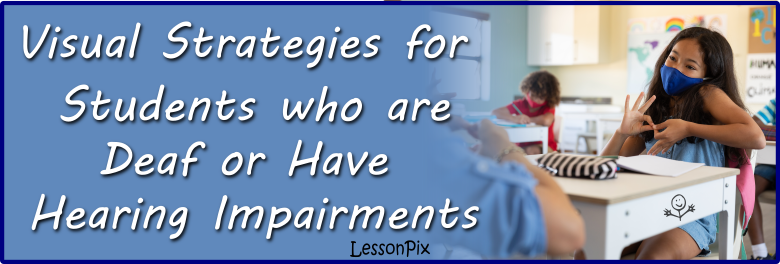
7 Visual Strategies for Students who are Deaf or Have Hearing Impairments
Students who are Deaf or hard of hearing (DHH) need a variety of strategies to access the curriculum, as they rely more on their eyes to access the world. Visual attention strategies are essential for getting and maintaining joint attention, for communication in social interactions, and for making connections between meanings and printed words.
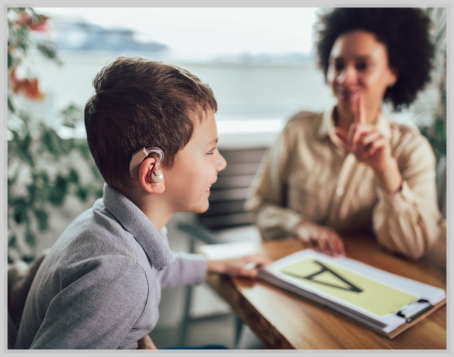
Most students who are deaf are primarily visual learners (Nover & Andrews, 1998). Many educators and researchers suggest to establish visually rich learning environment, such as sign language, print visuals, written instructions, and video components. Visual strategies are important, even for students with perfect hearing.
Here are some simple strategies that will help support students who are deaf or have hearing impairments. Click on the pictures to find the material ready-to-print in the Sharing Center. Many of these strategies also benefit the other students in the classroom.
1. Ensure a Clear Line of Sight
The teacher must face the students when speaking to the class. Have good lighting and hair pulled back. Speak normally, repeating and rephrasing as necessary. If there is a group activity, place the group in a circle so everyone can see the other participants. Here are one page pictures of classroom expectations from the LessonPix Sharing Center: looking eyes, listen, gentle touches, etc.
2. Multimedia Approach of Lesson Content
PowerPoint presentations are preferred over traditional chalkboards, so the teacher does not have to turn his or her back to the students. Check out the LessonPix PowerPoint Tools to open your custom materials and create custom presentations.
3. Allow Processing Time
A hearing person can view visuals and listen at the same time. Students who are deaf and hard of hearing, especially those who rely on visual communication (ie sign language or speechreading), need time to switch between the visual content and the explanations. They must process information sequentially rather than simultaneously. Students who use cochlear implant technology require processing time as well.
Post visuals on wall to help remind instructors and other speakers to give added wait time.
4. Pre-Teach Vocabulary
Students who are deaf and hard of hearing typically do not learn words incidentally; explicit instruction is necessary. Use effective approaches such as word walls, semantic maps, and discussion of words. Repetition is essential.
5. Language Rich Experiences
Language preceeds literacy, so it is crucial to promote an enriched language environment. Offer time for students to interact with professionals and peers using language in meaningful ways.
Offer times for playful learning games and conversation question starters to facilitate genuine communication using on-topic vocabulary.
6. Print Rich Environment
Regardless of the communication modality used, make print an important part of everyday routines, and emphasize the value of reading and writing in varied, meaningful activities throughout the day. Label the Items in the classroom.
Include ASL symbols in classroom activities and visuals.
7. Partner with Families
Maintain conversation between the home and school so that vocabulary and language concepts are reflected and reinforced in as many different settings as possible.
LessonPix materials are generated in a pdf format, easily e-mailed to families. Send home vocabulary words, small books, or activities for the families to use at home. Learn more about LessonPix's Sharing Policy here.
Keep in mind, signing like speech is a transient signal – this signal moves – it is there and then gone. Visual strategies help students focus on important information, see how concepts are connected, and integrate prior knowledge with new knowledge. Multisensory instruction that emphasizes visual supports will optimize learning opportunities for children who are deaf or hard of hearing.
Most of all have fun connecting and learning together!

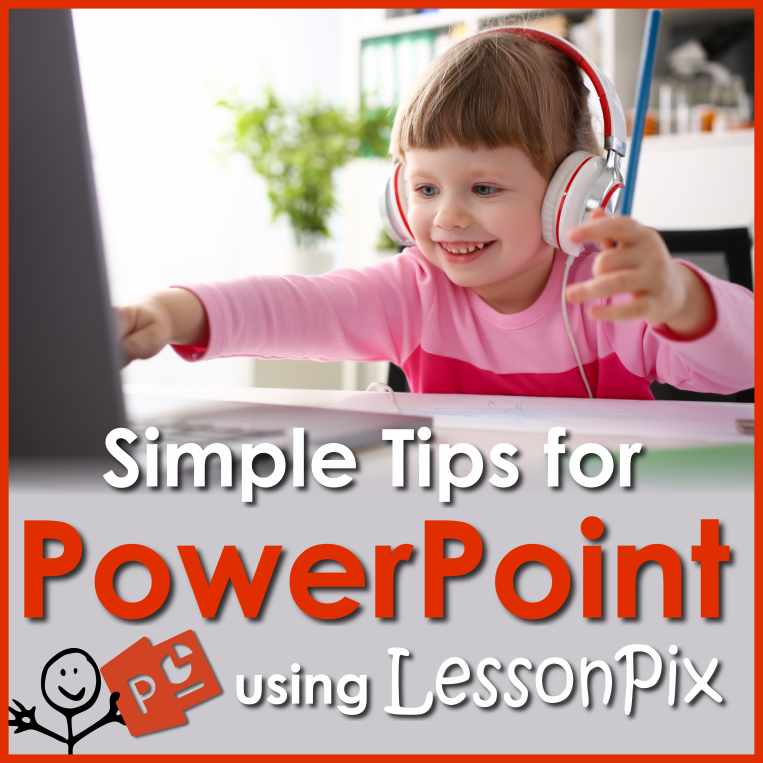
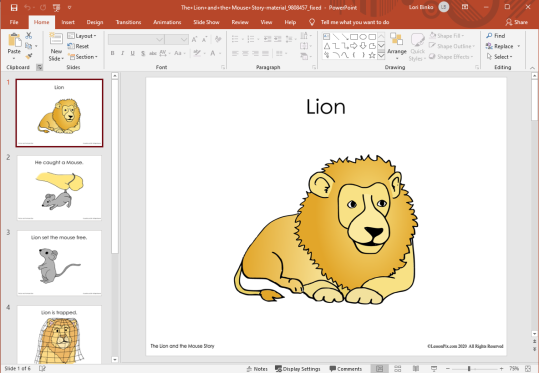

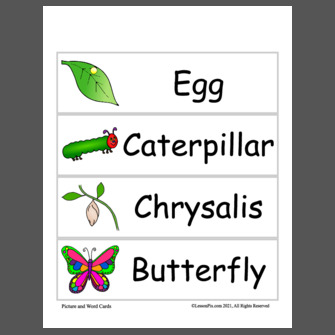
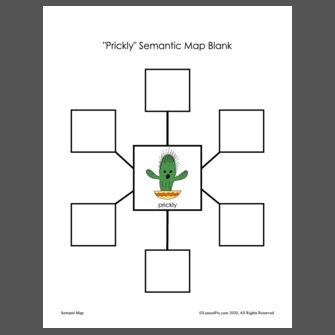
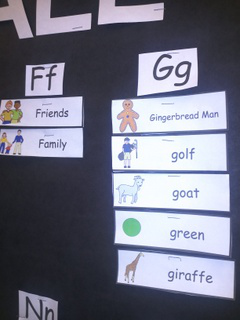

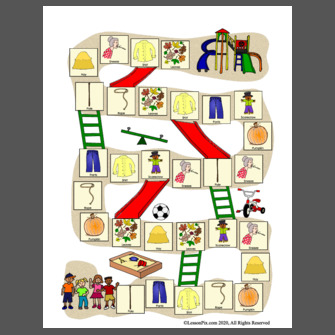

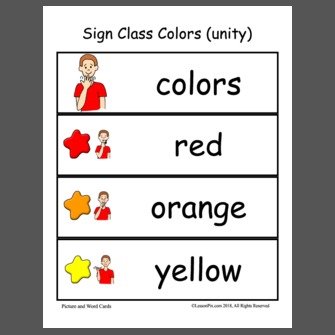
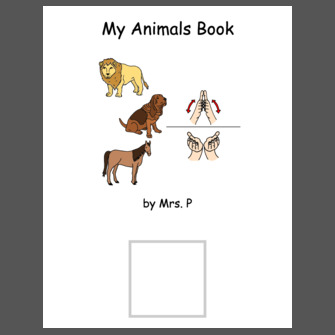
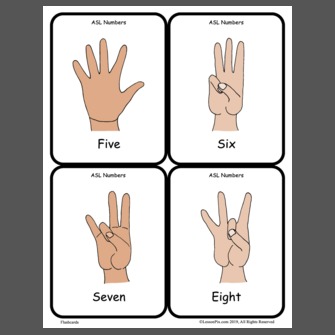
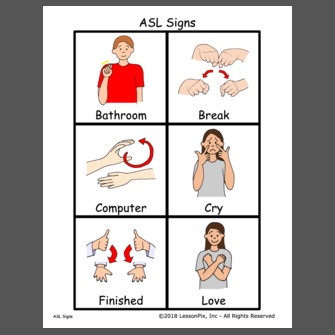

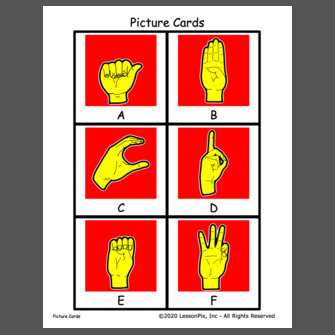
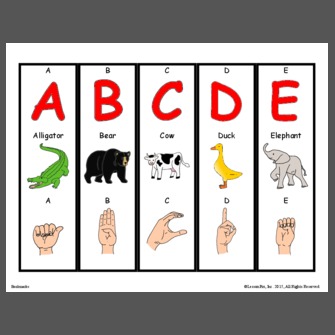
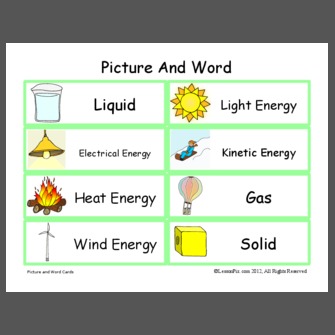
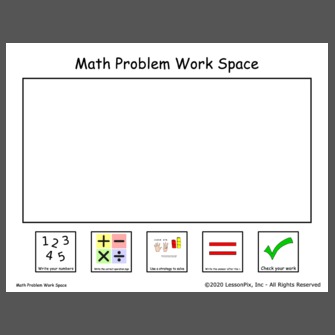

 Facebook
Facebook Twitter
Twitter Pinterest
Pinterest